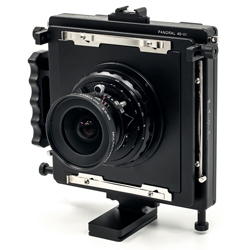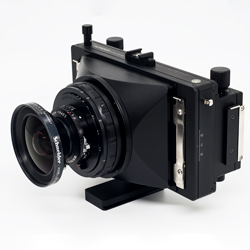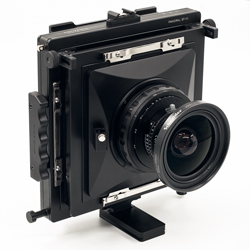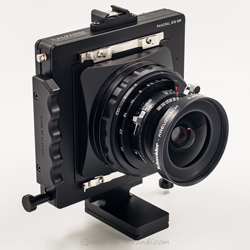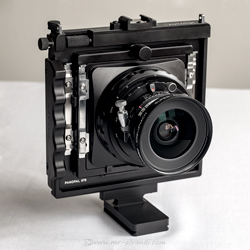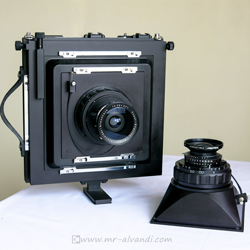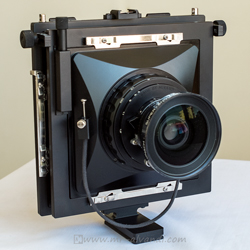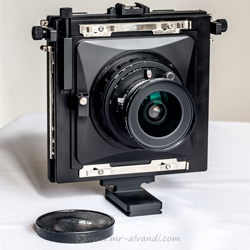Tilt – Shift Adapter for Panoral 45 camera
Introduction
When speaking of large format camera, an undeniable characteristic of it, is the ability to Tilt-shift. This capability is changeable by type of application of this camera for a variety of subjects. The design model, by large-format camera maker, is in a manner, that this feature is used, for a wide range of subjects.
Alvandi Panoral 45 Ver. II camera, is an new version Panoral 45 technical large format camera. All parts are made of Aluminum alloy 6061 T6 by CNC machine. All aluminum parts are coated by black anodized and all steel parts coated by copper-nickel-chromium. The new Tilt-Shift Adapter is new features in this camera. Read more
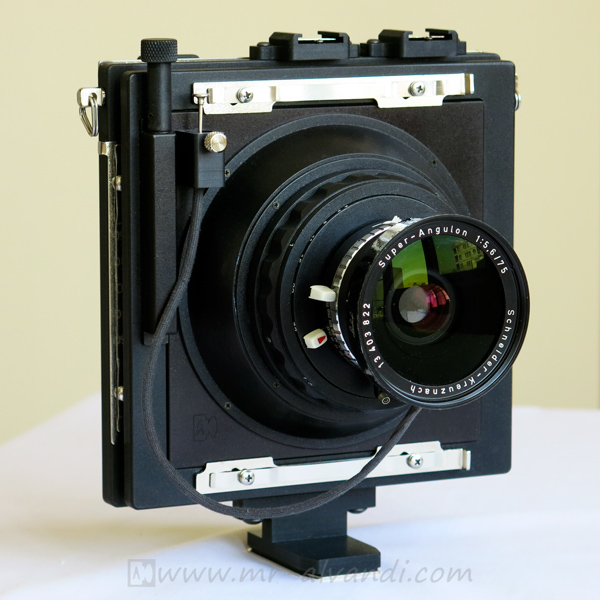
The Tilt- shift settings in modern cameras, is in most cases more than the required amount. This item can be a great advertising for the manufacturer. While the increase in the volume and weight of the camera. And the photographer is forced to tolerate volume and weight of the camera due to the general design form.
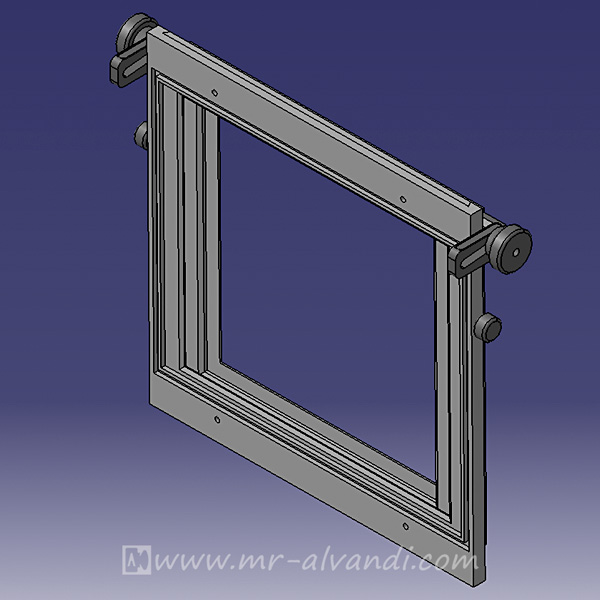
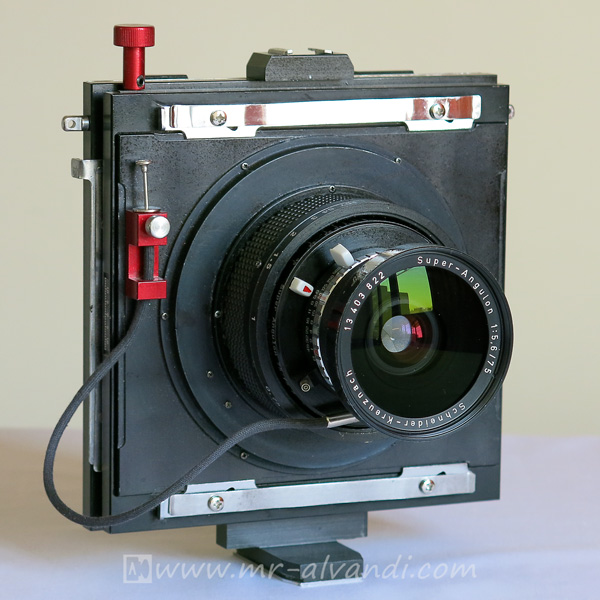
Tilt – shift adapter for Panoral 45 camera
As explained on the web page of the Panoral 45 camera, this device is a large format (multi-format) technical handy camera. This camera is designed for use in landscape photography. And in this regard I have regarded for its many capabilities. One of them, having a modular character.
Panoral 45 camera is also used as a super wide-angle camera. My main idea of the design and construction of the camera, it was recent case. As I said earlier, a super wide–angle camera, due to the use of a wide–angle lens, does not need to Tilt (angle lens holder plate, relative to the surface of the film), but because I wanted to increase my camera capabilities, I thinking about the design of the adapter.
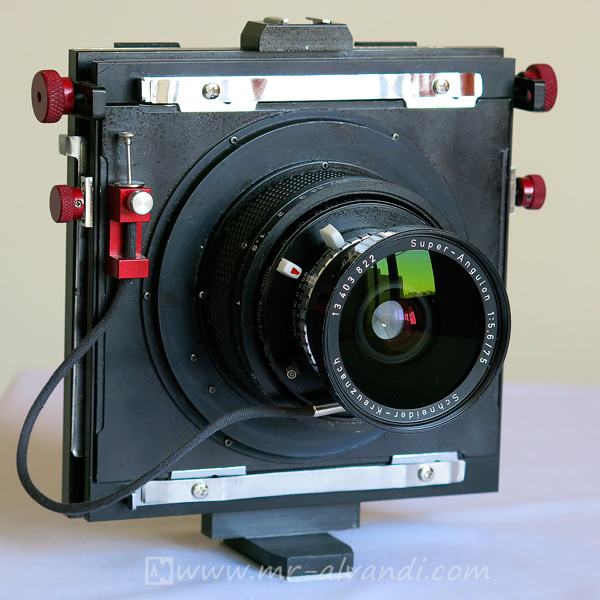
In the old design, there was a piece called lens shift. This piece was an interface between the lens and the camera body, which has the capability shift in vertical directions (vertical shift) or horizontal (lateral shift). This piece is completely independent and can be connected to the body and lens.
Lens shift, exactly replaced by the Tilt-shift adapter. Thus has been created, the Tilt and Shift movement simultaneously and independently.
How much Tilt is enough for landscapes photography?
Of course, this is a very general question. Because, Tilt value depends on various parameters. The most important of these parameters, is the focal length of the lens and camera format.
One of the things I have regarded for this design, was the point that, I could use this plan for the Panoral 57 camera. And keep in mind, that Panoral 57 camera is larger format, and therefore requires more Tilt.
Usually lenses with a longer focal length, will need to the more Tilt. My longest focal length lens, which I use for Panoral 45 and Panoral 57 cameras, is Schneider Symmar-S 210 / 5.6. So the design should be considered on the basis of this lens.
Due to the fact that this camera is used shooting landscapes, so I chose the flat subjects to measure Tilt. Of course I must to consider the limitations dimension of my camera.
At first I made a prototype to measure the exact amount Tilt. After various tests, and choose various subjects, I measure the amount of +8 degree for 210 mm lens. It should be noted, this amount for a 210 mm lens, is sufficient for the shooting landscapes with infinity focus. And if used for other purposes may be insufficient.
How much Shift is enough for landscapes photography?
In many of the landscape subjects, of course, Shift may not be used. Shift is usually used to correct perspective of architectural subjects. But when we do Tilt movement, use the Shift is almost irrefutable.
Why should be used Tilt and Shift movements simultaneously?
The output lights of all lenses, constantly creates a cone of light. And a full frame of film, will be deployed at the base of this cone of light.
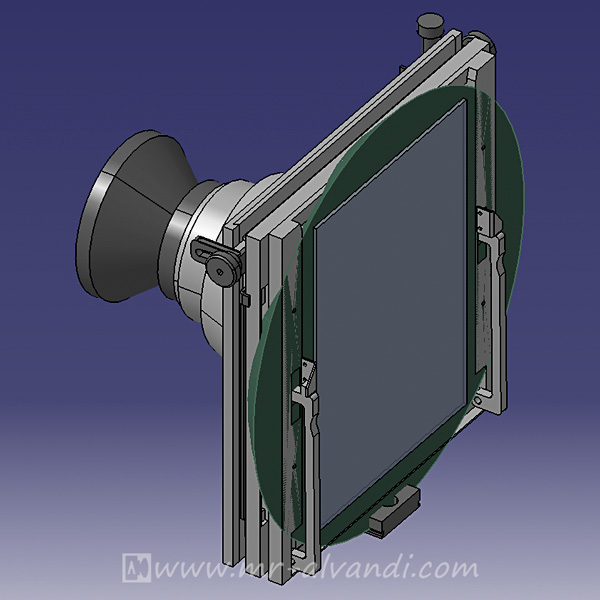
In 35mm or medium format cameras, the diameter of the base of this light cone is slightly larger than film frame. But in large format camera, with the ability to Tilt-Shift movements, the diameter of the base of the light cone, should cover a much larger area of the full frame film used.
Diameter of a circle, the base of this light cone hypothetical, in the optics industry, has been named as the image circle diameter.
Reminder: As we know, in all the lens, brightness in the center of the image, is more the edge of the image of lens. This issue is more strong in large format wide angle lenses. So that large format lenses producing companies, have produced a special filter called Center Filter, specifically for each lens. These filters have most gray neutral density in the center of the image, and decreases that value from the center to the edge in diameter, with a regular pattern, which fits with that particular lens.
In the large format camera should always try, in addition to camera movements, placed the optical axis to the center of film. This issue should be done for several reasons.
First, the lens used may have an image circle diameter slightly larger than a film frame image. And for this reason during Tilt movement, gets out film frame of the light cone, and thus would adumbration (Cut off) edge of the image. So we should by Shift movement, put the film frame in image circle diameter of lens.
The second reason for a doing Shift movement, is to prevent the loss of light at the edge of the image, because Vignetting. That may occur when using the Tilt movement.
According to the application of the camera for landscapes photography and limitations, obtained maximum value ±15 mm Shift, for this adapter. Of course, This feature could be vertical Shift or lateral Shift.
It should be noted that the adapter, can be connected to the camera body in all directions. So Tilt – Shift movement is possible in all directions.
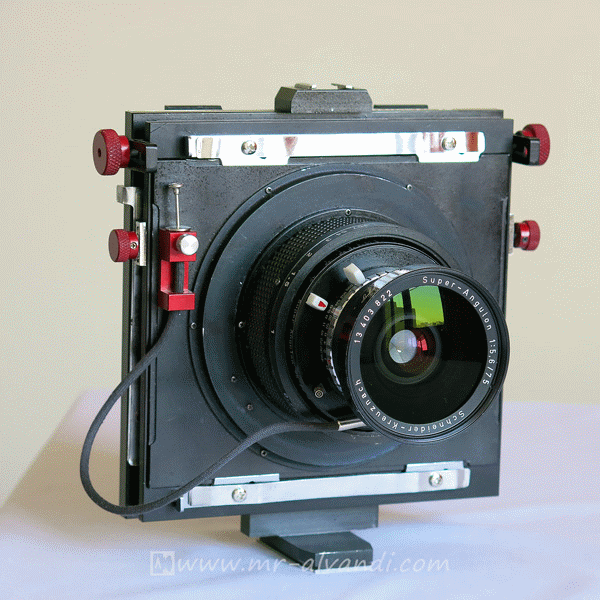
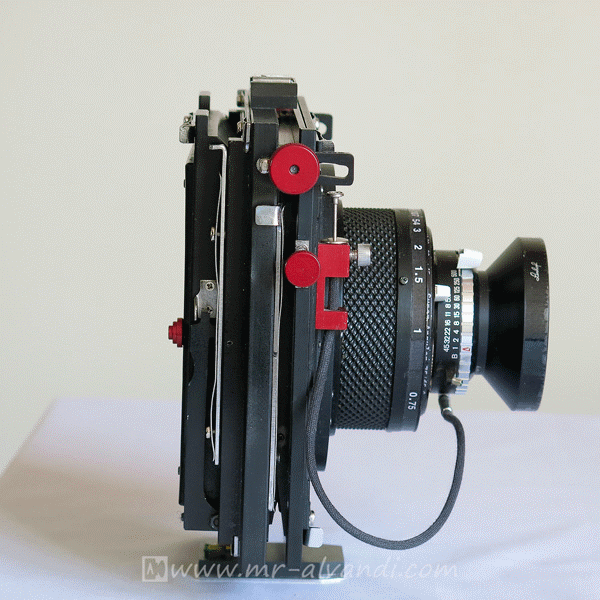
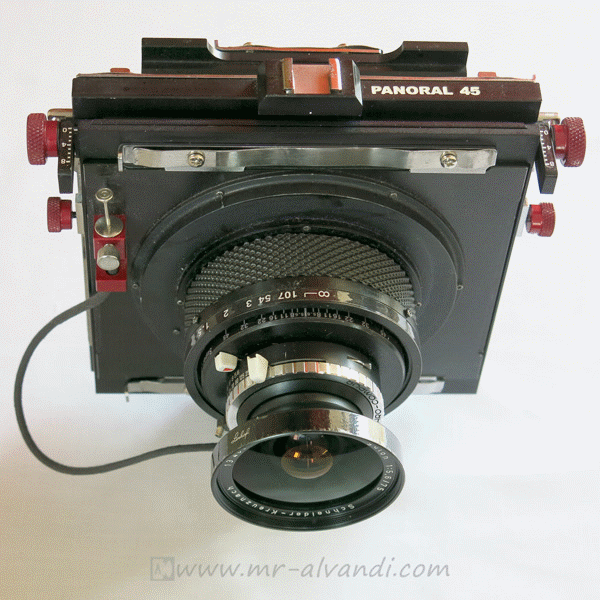
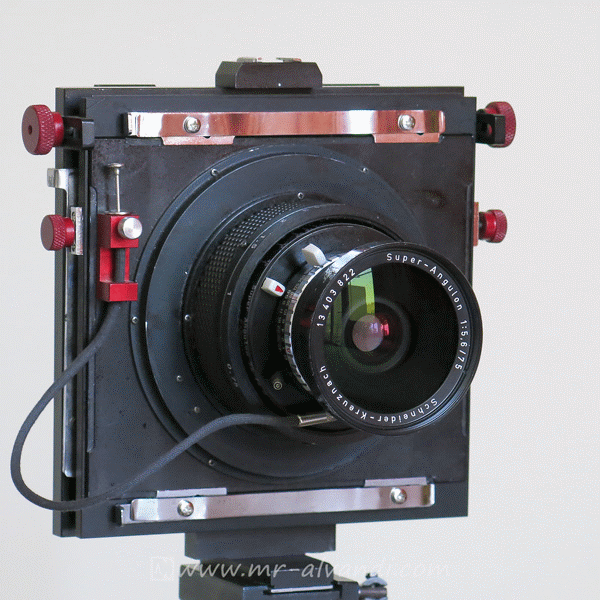
Technical Specifications
System: Tilt – Shift Adapter
The camera used: Panoral 45 handy large format technical camera
The Shift value: ±15 mm up – down or ±15 mm left – right
The Tilt value: +8 degree in all directions
Lens Used: from 24 to 210 mm large format lenses (lenses 47, 65, 75, 90, 150, 210 mm is designed for it)
Material: Aluminum Alloy 7075
Coating: Anodizing
Paint: Anti – reflective black
External dimensions: Width 165mm, Height 165mm, Depth: 32mm
Weight: 250 gr

